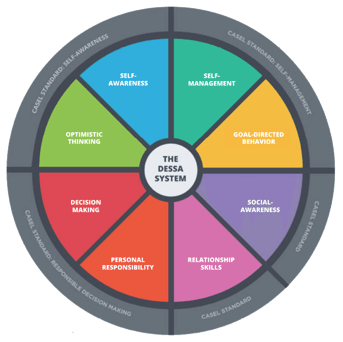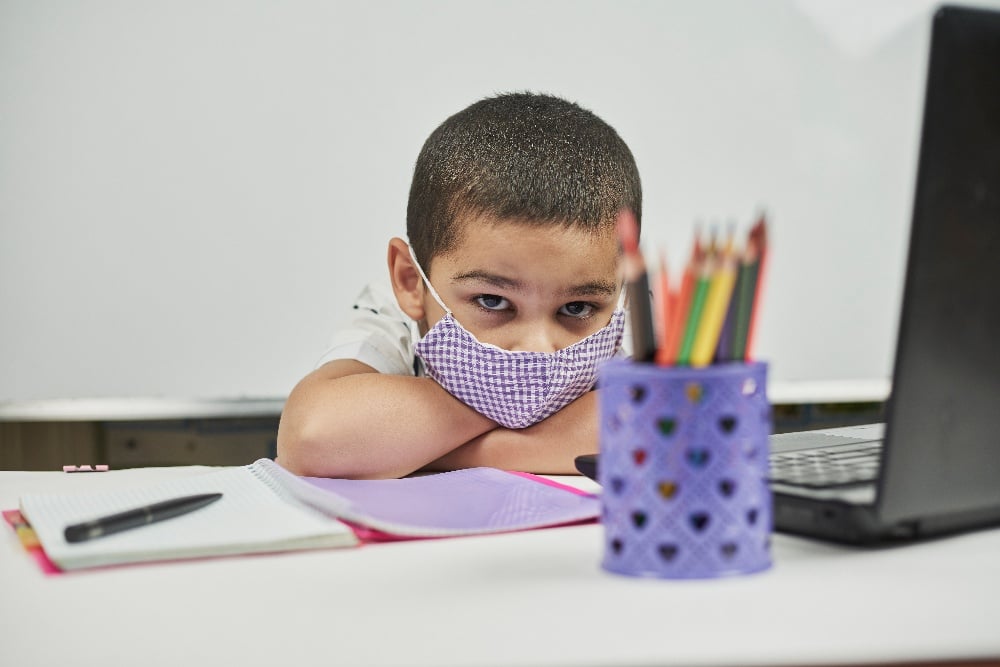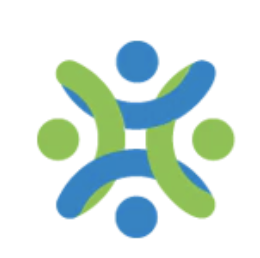
Social Emotional Learning (SEL) is more important now than ever before as educators need tools to navigate student well-being in remote or hybrid classrooms. Learn how to look for student SEL needs, and how to provide support as a special education professional in this three-part SEL series.
What is SEL?
SEL has become a buzzword in our current education landscape, but what is it really? A leader in the SEL space, The Collaborative for Academic, Social, and Emotional Learning (CASEL), defines SEL as “…the process through which children and adults understand and manage emotions, set and achieve positive goals, feel and show empathy for others, establish and maintain positive relationships, and make responsible decisions.” While this is not the only definition, it is used by many to help provide a framework for SEL education.
Accordingly, CASEL developed five widely-used competencies for understanding and teaching SEL:
- Self-Awareness: recognizing and understanding one’s own strengths and limitations, emotions, thoughts, and values with a “growth mindset.”
- Self-Management: how one sets and works towards goals, manages stress, motivates oneself, and regulates emotions.
- Social Awareness: empathizing with and respecting others, understanding social norms, and appreciating diversity.
- Relationship Skills: the ability to make and maintain healthy relationships with others, communicate with others, handle conflict, and ask for help.
- Responsible Decision-Making: safe, constructive problem solving with an understanding of consequences and respect for others.
These competencies can provide areas for teachers to focus on when determining student SEL needs and planning instruction.
Does SEL Work?
In short, yes. Multiple studies have shown that SEL is effective at improving student social and emotional skills, leading to both short- and long-term improvements in behavior and academics. This article from Phi Delta Kappan, sums up four of the major meta-analyses that have been done on hundreds of SEL studies. The meta-analyses showed that studies were multi-cultural and international, included rigorous scientific research, and results were replicated. Results showed, among other things, that students who received SEL support saw increased positive social behavior, a decrease in conduct problems, and an increase in academic performance across studies.
In the past, many SEL skills have been thought of as “soft skills” or things to fit in when educators needed filler activities. Now, many educators have come to see SEL as a necessary part of instruction that should be incorporated throughout the school day. Students need SEL skills to be successful not only at school, but also in their relationships and future careers. Here is an informative video from Edutopia that discusses how SEL should be a part of all we do in the classroom instead of a filler activity.
Why is SEL So Important While Teaching Remotely?
The pandemic has been difficult for everyone, but it has been especially difficult for students with disabilities. Their schedules have been changed, their school safe places may be inaccessible, and remote or hybrid learning could be very challenging for them, adding multiple new stressors. Students who struggle with social skills may be more impacted than others, as they are not getting peer-to-peer interaction like they would in the traditional school setting. Many students have also experienced trauma related to the pandemic, including but not limited to the death of a family member, food or housing instability, or domestic violence and may need additional supports. Students need tools and supports for managing their changing world now, not just when we return to in-person teaching.
I get it—it can be so hard to feel you are including everything you need to do on a daily basis for students, from teaching the standards to taking behavior data to communicating with families, especially if you are also still transitioning your teaching to remote learning or a hybrid model. While it may take some initial planning to implement SEL tools or activities, in my experience the outcomes can be significant. The more you focus on implementing SEL in your classroom, the easier it becomes to integrate SEL into your daily activities. Many SEL activities that are done in person are also easily translated to remote learning.
What can we look for when determining SEL needs for our students who receive special education services?
While more districts and schools are committing to utilizing SEL programs or frameworks on a macro level, it is still important to self-reflect on your own classroom and students in order to discern individual and small group SEL needs and implement strategies. Helpful places to look for your student SEL needs are discussed below.
- Start by searching your students’ IEPs in order to target individualized needs. Clues can be found throughout the IEP but especially in the present levels, transition page, PBIS section, and goals. Social skills goals are a clear indicator of course, but also look at things like work completion behavior and attendance. If a student had excessive absences in the last school year, there may be a need for self-management strategies in the area of motivation, for instance. I really hesitate to tell you to use disability “labels” as a place to gather your SEL needs information, however. SEL needs should be based on the individual student or classroom needs; for example, it is a stereotype that all students on the autism spectrum have a difficult time voicing their emotions and this may not be the case for certain students.
- Behavior plans and data are also a great place to gather SEL needs. A student that has multiple suspensions for getting into fights with other students may need assistance with relationship skills and responsible decision-making.
- Explore student testing results you already have. Evaluation or reevaluation data is a wealth of information that can provide insight into student SEL needs. Transition assessment data can be helpful as well. For example, if a student cannot recognize their own strengths and limitations, such as on a job interview, they may benefit from self-awareness SEL work.
- Observe common themes in your classroom to discover whole group needs. For example, many students with and without disabilities struggle during group or partner work (remotely, this may be in breakout groups), so this can be an excellent time to observe how students interact with each other. Also pay attention to what kind of conflicts or issues arise between students generally in the classroom, whether you are in-person or virtual. Are students talking over each other? Saying mean things to other students? Or, are students discussing how they feel stressed, tired, and overwhelmed? These are all important clues to SEL needs in your classroom.
- The CASEL competencies discussed above are a great resource, and many states now have SEL standards. Here is a link to state SEL standards. You can explore these as you would academic standards and observe which standards your students are and are not meeting, creating plans from there.
- You can also create informal assessments such as rubrics, self-rating activities, and student interviews to determine SEL needs. For example, at the end of a group project, I would often give my students a “check out” slip where they had to rate how well they worked with others. This can be done with a number rating scale or even simple pictures of faces that students could point to.
- Last, there are formal SEL assessments that allow educators to see baseline and progress data. A comprehensive summary of assessments is linked here, provided by the American Institute for Research. Many of these assessments are utilized for school or district-wide
 assessment. CASEL also has a useful guide for choosing SEL assessments with clear steps for making decisions. One example of a highly reliable SEL assessment is Aperture Education's DESSA Comprehensive SEL System (DESSA System), a web-based system that schools can use to assess student SEL skills and progress monitor results. The evidence-based assessments within the DESSA System are directly aligned with the CASEL competencies and can be used with K-12 students. The DESSA System also provides research-based strategies to implement both at school and at home, when working with whole group, small group, and individual students.
assessment. CASEL also has a useful guide for choosing SEL assessments with clear steps for making decisions. One example of a highly reliable SEL assessment is Aperture Education's DESSA Comprehensive SEL System (DESSA System), a web-based system that schools can use to assess student SEL skills and progress monitor results. The evidence-based assessments within the DESSA System are directly aligned with the CASEL competencies and can be used with K-12 students. The DESSA System also provides research-based strategies to implement both at school and at home, when working with whole group, small group, and individual students.
What mental health red flags should you watch for?
While we are working remotely on SEL skills, it is important to be aware of mental health red flags from our students. The pandemic could heighten feelings of loneliness, confusion, or lack of safety in home environments. COVID-19 has been stressful for most people, and could put students who have mental health histories such as depression, anxiety, or past suicidal behaviors at high risk. If a student appears to be exhibiting behaviors such as the ones below, follow your school or district protocol (for example, if you have a student risk assessment or team), communicate with the appropriate family or guardians, and report issues to child or adult services if necessary. While SEL tools can help with these signs and symptoms, these can be more serious and may require more advanced interventions. The red flags shared below are compiled from Mentalhealth.gov and the National Association of School Psychologists.
Students may exhibit:
- Regression behaviors such as thumb sucking, bedwetting, and clinging to caregivers
- Eating and sleeping changes or nightmares
- Withdrawal from activities, family, and friends
- Feeling very sad or irritable for more than two weeks
- Making plans to self-harm or actually doing so
- Behavior that hurts others or puts others in danger
- Drug or alcohol use
- Extreme changes to behavior/personality or mood swings
- Participating in dangerous behaviors/conflicts or a desire to hurt others
- Fear and worry that affect daily activities or cause physical symptoms
Look for Part II in this SEL series to learn about helpful tools and resources to address SEL needs in our in-person, remote, and hybrid special education classrooms.




